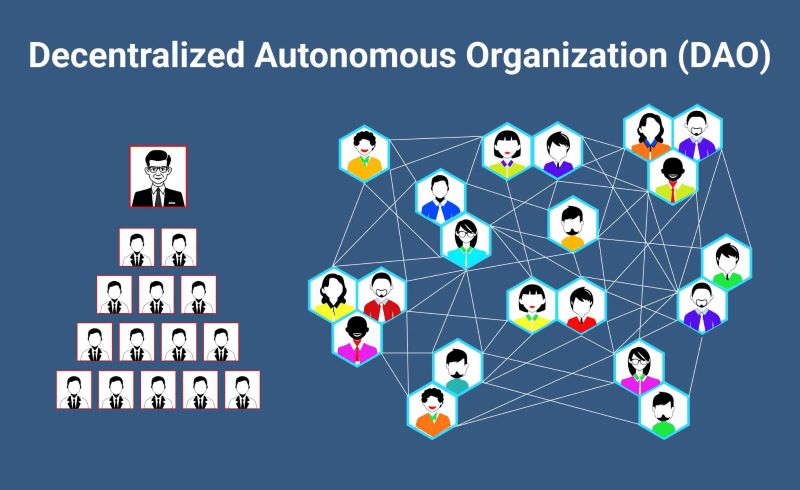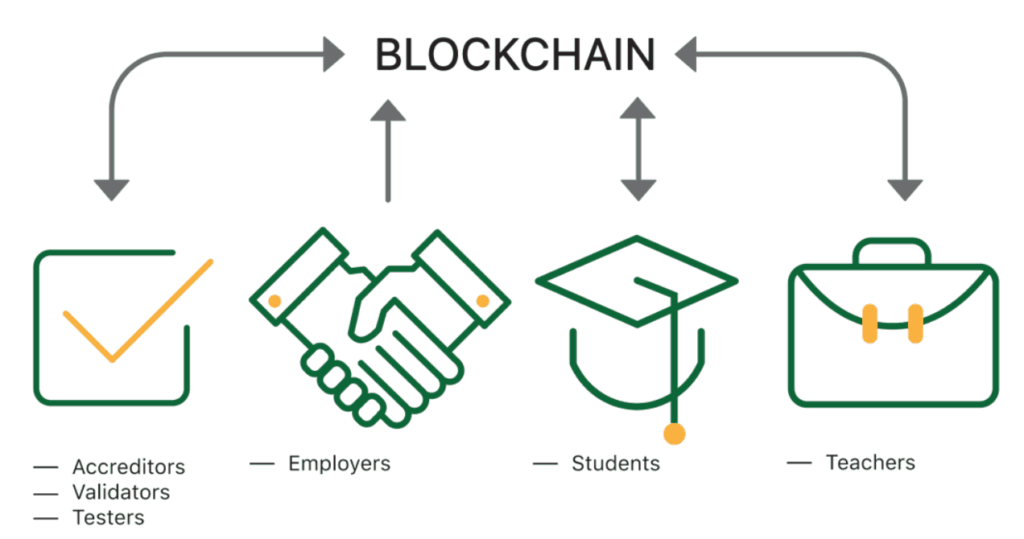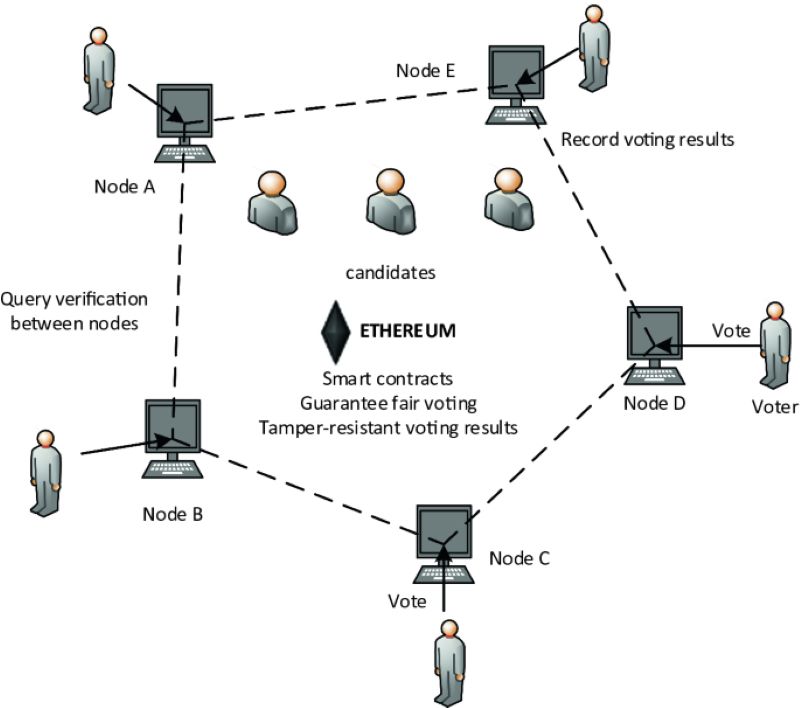Imagine an education system that’s as open and vast as the internet itself, where your achievements and records are as permanent as a diamond. Welcome to the frontier of “Decentralized Learning Unchained: Navigating the Blockchain Education Revolution.” In this world, how do decentralized learning platforms with blockchain work? Simple – they turn the standard way we see schooling on its head. Every byte of your learning journey is secure and untouchable, stored forever on a digital ledger. Get ready to unpack the nuts and bolts of a system that’s redefining knowledge transfer, where smart contracts ink your progress, and peer networks thrive on shared wisdom. Together, we’re about to explore how blockchain is more than just tech talk; it’s a game-changer for learners everywhere. Buckle up; education is getting a blockchain-powered upgrade, and this ride is anything but boring.
Unpacking the Basics of Blockchain in Education
Understanding Decentralized Education Systems
Have you heard about blockchain in schools? It’s a new way to learn and share. Just like playing with blocks, one piece connects to another. In schools, blockchain joins info in a way no one can change it. This is key in a world where keeping facts safe and sound is a big deal.
When you hear “blockchain in education”, think of a super-smart way to keep records that everyone can trust but no one owns. Think of each student’s work saved forever, never lost or changed. It’s the power behind Bitcoin, but now for grades and projects too.
Imagine a school as a wide web of friends who all hold parts of each other’s work. We call this a peer-to-peer education network. Together, they make a strong net that holds every piece safe. Each student adds to the blockchain by doing work or grading tasks.
The Role of Distributed Ledger Technology in Learning
Let’s dive deeper. What’s a distributed ledger in learning? It’s like a magic book that copies itself to everyone in class. Each copy stays the same, no cheats or mix-ups. Teachers can give out smart contracts for course delivery. These are like pinky promises in code that can’t be broken. They make sure everyone gets what they need to learn and grow.
Blockchain isn’t just for sharing facts and grades. It’s also about tokenization in online learning. That means students can earn tokens, kinda like gold stars, that they can trade for things like books or extra help. It’s a big cheer for hard work that also teaches about money and saving.
The best part? It opens doors across the world. With blockchain, a kid in Brazil and a tutor in Japan are just clicks away. It’s a solution with no borders, helping all of us, everywhere, to learn more and better together.
Blockchain technology for e-learning makes sure every step in learning is clear and fair. No more worries about losing your hard work or someone else saying it’s theirs. It’s a change that’s already rolling out in lots of schools and it’s set to stick around.
This isn’t just about today. Blockchain is a friend for lifelong learning, tagging along through every class and job. One day, we could see a world where every lesson, every skill, and every win stays with you on a safe chain that’s yours alone but part of a huge, learning family.
So, blockchain is like the strongest, coolest chain of learning blocks you can imagine. It’s building a smarter, fairer, and more connected school, not just in one place but all over the globe. That’s not just cool; it’s a revolution in how we learn and grow together.
The Mechanics of Decentralized Learning Platforms
Implementing Smart Contracts for Course Delivery
Let’s dig into how blockchain shakes up the classroom. First off, what are smart contracts? They are like promises written in code on the blockchain. They automatically do tasks when conditions are met. In school, this means they can handle stuff like grading or handing out coursework without a hitch. It’s like having an iron-clad system that does what it’s told, faultlessly and instantly. This cuts down cheating and saves teachers time.
Building Peer-to-Peer Education Networks for Collaborative Learning
Now, imagine kids learning from each other without any middleman. That’s peer-to-peer learning for you. In this setup, everyone can share knowledge directly. There’s no central control point, just a web of connections. These open doors to new ways of working together. Students can help each other and grow, no matter where they are in the world, all backed by blockchain power keeping records straight and secure.
Through blockchain in schools, we create a trust zone. People can rely on the data as it can’t be messed with. This makes sure every bit of your hard work is logged for good. Smart contracts handle assignments, tests, and all that busywork with no sweat, freeing up time for teachers to really teach.
This model isn’t just for handing out homework. It’s a two-way street. Students give feedback, making courses better over time. With blockchain tech for e-learning, they plug into a whole ecosystem that values their voice.
In a decentralized education system, learning can happen at each student’s own pace. This personalized touch means no one’s left behind. And for those who excel, they can jump ahead to more challenging material. Each milestone is stamped on their blockchain-based student portfolio. Solid proof of their brainpower and effort.
Because everything’s transparent, with blockchain verified certificates, your achievement is yours to keep, forever. It’s like the trophy case in your living room, but everyone in the world can see it and trust it’s genuine. Now blend in the chance to earn tokens for top marks. You’ve got a recipe that makes hitting the books as rewarding as playing a game. That’s tokenization in online learning for you.
Blockchain is reshaping learning. It’s making it fair, secure, and kinda fun. With custom smart contracts and peer-to-peer networks, kids unlock their potential. They learn better, share smarter, and carry their wins for life. It’s more than tech; it’s a fresh start to study, share, and succeed. And for us watching this unfold, it’s thrilling to steer education into this bold, new chapter.
Enhancing Educational Integrity and Accessibility
Ensuring Immutability and Security of Academic Records
Imagine your school report card lasting forever. That’s what blockchain does for grades. With blockchain technology for e-learning, no one can change grades once teachers enter them. It’s like locking them in a safe no one can crack. Better yet, it keeps all your hard work safe and sound, forever. Schools love this because it fights cheating and fake diplomas. With blockchain, your learning stays yours – always true, always yours.
Blockchain makes sure no sneaky business happens with school records. What goes on the blockchain, stays unchanged. Yes, like a fly in amber. Immutability in educational records means your marks are etched in digital stone. You could show your grades to anyone, years later, and they would still be there, unchanged. This protects honest students and schools. Blockchain helps keep trust in what schools say you’ve learned. It says, “This student really did it!”
Facilitating Interoperable Learning Platforms with Blockchain
Next comes connecting different places where you learn. Not just your school, but maybe online places too. Like a learning puzzle, blockchain helps all the pieces fit together. It’s called interoperability of learning platforms. No matter where you learn, blockchain helps show it all as one big picture. It takes your courses from here and there and makes a full story of your learning.
Blockchain is a big team player. It likes to work with all sorts of systems. This teamwork means distributed ledger in learning is a champ at sharing. When you do a project, or win an award, or finish a big exam, blockchain gives you a high-five that everyone can see. And when it’s time for college, or a cool job, these high-fives can help a lot. They say, “Look what I can do!” in a language all computers understand.
Using blockchain, different learning places talk the same digital talk. No more “this doesn’t work with that.” It’s like building with blocks; school A fits with online course B. Simple and sure, learning becomes an open book that everyone can read. Think of all the open doors this can bring!
Smart contracts for course delivery are a hero behind the scenes. Teachers set up a digital handshake that says, “Do this, and you win that!” With blockchain, it’s super clear, with every step and reward outlined. This way, you know exactly what to aim for.
In our world of learning, it’s not enough to just pile up facts. We also need to keep them safe and ready to show. Decentralized education systems take your lessons and achievements, keep them secure, and help them travel far and wide. It’s like having a passport for learning. No matter where you go, blockchain is there, guarding and sharing your bright journey of knowledge.
The Future of Education with Blockchain Integration
Driving Learner Autonomy Through Self-Sovereign Identity and Portfolios
What’s all the buzz about self-sovereignty in learning? It’s simple. We now control our own education records. Thanks to blockchain in education, students can own their learning info. This is huge! It’s like having a digital backpack that goes where you go. Nobody can mess with your stuff. That’s because blockchain makes your data safe. It won’t change unless you say so.
Blockchain allows us to create our very own student portfolios. These are records of what we learn and achieve. Plus, they are verified! When you show your portfolio, it proves your skills. You can share it when you apply for jobs or schools. And guess what? No one doubts it’s real—blockchain’s stamp of approval does that.
Scaling Blockchain Solutions to Expand Remote Learning Opportunities
Here’s where it gets even more exciting: blockchain for remote learning. Think bigger classrooms without walls. You can learn from anywhere, with folks from around the world. This makes education reach far and wide.
But how do we make sure lots of students don’t crash the system? With tech talk, we call that “scalability.” Don’t worry—we’re on it. Blockchain tech is getting better every day, making more space for students online. It’s like building bigger online playgrounds for brains!
Blockchain gives you the chance to learn at your own pace, too. Slow down or speed up; it’s up to you. And the best part? Cheating is way harder. Blockchain tech keeps all our hard work honest and fair. That means everyone’s effort counts for real.
What if you do something great in your online class? Brace for it—cryptocurrency could be your gold star. Some smart cookies out there think we could earn digital coins for hitting learning milestones. Imagine trading those coins for cool stuff or to take more classes. Learning could literally pay off!
As an expert, I see blockchain changing how we learn and teach. It’s making education safer, more open, and more honest. So, whether you’re a first-grader or a forever student, blockchain tech is ready to rock our education world. Let’s dive in and learn the blockchain way, one block at a time!
We dove into how blockchain can reshape education by decentralizing systems and using tech to make learning secure. It’s clear that smart contracts and peer-to-peer networks can bolster course delivery and collaboration. Records stay safe and platforms work with each other better, thanks to blockchain. With a student-focused approach, blockchain tech ensures education is both reliable and reaches wider, even to remote places. The future looks bright for learning, with blockchain steering us towards more control over our educational paths and more chances to learn from anywhere. Let’s embrace this shift and unlock new possibilities in teaching and learning.
Q&A :
How do blockchain-based decentralized learning platforms function?
Decentralized learning platforms that leverage blockchain technology operate by providing an education ecosystem that is not controlled by a single entity. Instead, they use a distributed ledger to record and validate all transactions and interactions. This approach ensures that educational content, accreditations, and learner data are stored securely and transparently.
What advantages do blockchain decentralized learning platforms offer over traditional ones?
Blockchain decentralized learning platforms offer several advantages over traditional systems, including:
- Security and Immutability: Data on the blockchain cannot be easily tampered with, providing a secure environment for storing educational records.
- Transparency and Trust: All transactions on the blockchain are transparent and verifiable, which builds trust amongst users.
- Ownership and Control: Learners have control over their data and can share their educational achievements without third-party involvement.
- Reduced Costs: By eliminating intermediaries, these platforms can reduce fees associated with educational content and credential verification.
Can decentralized learning platforms with blockchain issue verifiable certifications?
Yes, decentralized learning platforms with blockchain can issue verifiable digital certifications. These certifications are recorded on the blockchain, making them immutable and easily verifiable by employers or other institutions. This system ensures the authenticity of the educational credentials and eliminates the chances of fraudulent claims.
How accessible are blockchain decentralized learning platforms?
Blockchain decentralized learning platforms aim to be universally accessible. They offer an array of courses and materials that are accessible from anywhere around the world, provided the user has internet access. Furthermore, transactions on the blockchain are borderless, allowing for seamless payment and enrollment processes regardless of geographical location.
Are decentralized learning platforms with blockchain technology cost-effective for users?
In many cases, decentralized learning platforms with blockchain technology can be more cost-effective for users than traditional education platforms. By removing intermediaries and reducing transaction fees, these platforms can offer courses and materials at a lower cost. Additionally, the peer-to-peer nature of blockchain can facilitate cost-sharing models, potentially leading to further reductions in price for end-users.




RELATED POSTS
Role of Blockchain Security Audits: Your Crypto Safe Haven?
Enhance Blockchain Security with Audits....
What is the current market price of Bitcoin? Insights into today’s fluctuating values
What is the current market...
Understanding the Stock to Flow Model – How to Optimize Investment
The Stock to Flow Model...
Student Data Portability: How Blockchain Revolutionizes Academic Credentials
Empower students with data ownership...
Who has Andrew Tate’s Crypto Wallet?
Who has Andrew Tate’s Crypto...
Converting 900 MATIC to USD: Current Rates and Simple Calculations
Curious about the current value...
Purple Bitcoin: A new currency in the digital world
Purple Bitcoin is a unique...
Examples of blockchain transparency in action: Unveiling Impact
Examples of blockchain transparency in...
Nillion Airdrop – Leading the Trend from Testnet to Mainnet
By participating in the Nillion...
Pencils Protocol: Optimizing DeFi yields on Scroll
In the vast landscape of...
Smart Alaya AI Blockchain Technology – The future of the world
Curious about the game-changing potential...
Exploring the Bitcoin Halving Cycle – Future and Price Predictions
Exploring the Bitcoin Halving Cycle...
Ripple SEC Settlement Speculations Continue to Grow Amid On-Chain Data
The ongoing legal battle between...
Blockchain For KYC/AML: Streamlining Compliance For The Future
Blockchain for KYC/AML: Revolutionizing compliance...
Unlocking the Mystery: Who is Satoshi Nakamoto Really?
Who is Satoshi Nakamoto? Tracing...
Kelp DAO Airdrop – How to Earn Money from Kelp Miles
The Kelp Miles program within...